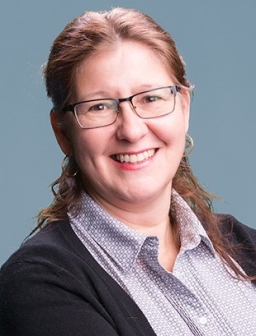It went live on Monday, January 26, when Concordia’s 32-year-old legacy information system was replaced with a package solution from Oracle/PeopleSoft called Campus Solutions.
Bruce sat down with us to share her insight into Campus Solutions and the SIS how-to guides created specifically for grad students.
What’s the biggest overall change the Student Information System brings for graduate students?
VB: The level of automation. Some departments have been registering online for a while, but for many graduate students, this is the first time they’ve used web-based registration and tasks. It’s a big step!
Many graduate students used to register manually, one-on-one with graduate program assistants, organizing their permissions and overrides. We have part-time students — with jobs and families — who find the new system much more convenient.
How does the popular new waitlisting tool apply, in particular?
VB: If you’re in a course-based master’s program, a certificate program or a diploma program, the tool lets you put your name on a waitlist for a course and swap a course in your full schedule for a preferred course when a space becomes available. You’ll get an automated email telling you when you’ve been added to a course.
If you’re registered in one section of a course, you can use the swap feature to be on a waitlist for a different section of the same course.
With registration for the Summer 2015 term opening on March 11, graduate students can also use the waitlisting feature in Campus Solutions to register for GradProSkills courses. Before the SIS, we used a stand-alone system inside Continuing Education. Now we have centralized registration and a built-in waitlist.
What’s another hot new feature for grad students?
VB: We never had online advisement at the graduate level, and now we do. Students can access the advising module from the My Student Centre dashboard, which is more useful to them than looking at their student record.
The advising module shows the courses they’ve taken, but it also shows which electives they can take, which courses satisfy which components of their program and which courses are in their qualifying program. That’s very helpful to keep students on track.
And there are progress reports. They’ll be available for PhD and thesis-based master’s students under “My Questionnaires” in My Student Centre. Students and professors do the same questionnaires and post their comments, made visible if they choose to share it with each other. The graduate program directors review the reports to evaluate the results and see if the graduate student is tracking satisfactorily.
What about thesis tracking?
VB: The capability is built into the SIS. Starting with 2015 summer admissions, we’re launching a pilot project to use the Milestones feature in the My Student Centre self-service dashboard for thesis students.
That’s where we can track whether students have completed the components for their comprehensive exams, for example, which might have three parts. It’s where students will see when they need to complete the different components to graduate.
Tell us more about what the My Student Centre self-service dashboard does.
VB: The beauty of the self-service dashboard is that it lets graduate students process their own service requests online through research activities — service requests.
Before the SIS, we used a stand-alone system created by the School of Graduate Studies to initiate things like requesting leaves, extensions, re-instatements and change of options. Now the students have a more hands-on role, doing the tasks directly and getting confirmation at the time of processing.
Is there any support to help graduate students transition to the SIS?
VB: We’ve created 12 how-to guides that take students step-by-step through the main tasks to be performed in Campus Solutions. We’ll add more guides as we get more feedback from students.
Can you give us an example of those tasks?
VB: How to register. How to create a request for a leave. How to create a request for an in-progress grade extension. And many more.
Where can students access these how-to guides?
VB: They’re posted on the dedicated SIS page on the Student Hub. Check back regularly, as we’ll continue to cover new topics and tasks.
Are there any “behind the scenes” benefits that indirectly help grad students?
VB: Yes! Now the graduate program assistants can track supervisors in the new system. Before, we had their names in an Excel document that wasn’t integrated into a bigger system. The new SIS makes us more efficient and responsive.
Any tips for mastering the new SIS?
VB: It’s very easy to use. Just get into the My Student Centre dashboard within the MyConcordia portal and have a look around. It’s highly intuitive, but the how-to guides are there to help them get started.
Check out the how-to guides for graduate student tasks on the Student Hub to get familiar with your new Student Information System.
 Virginia Bruce | Photo: Concordia University
Virginia Bruce | Photo: Concordia University